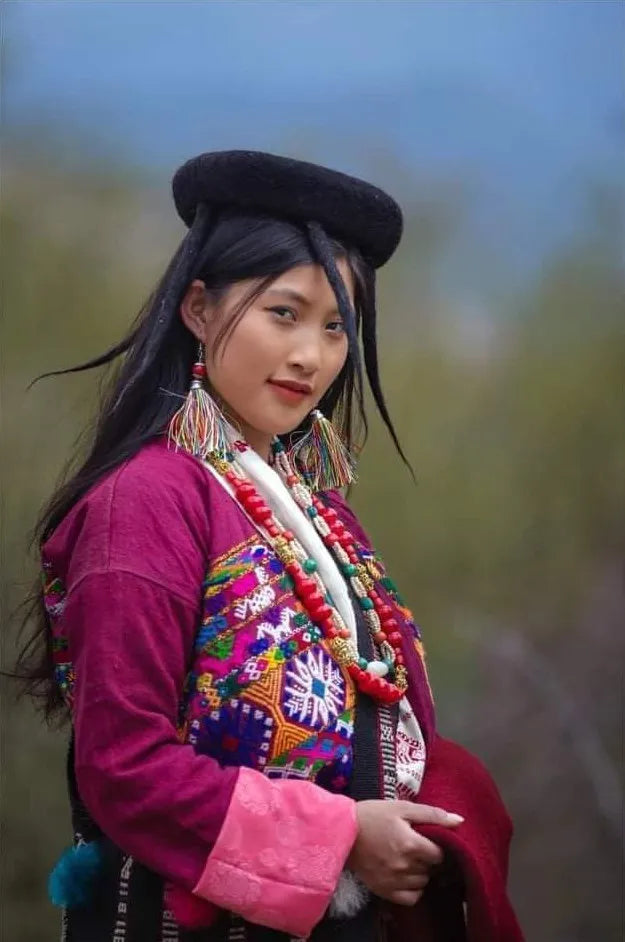
Bhutan's "Spider Hat" from the Zhuba Tribe in the Land of the Snow Monster








"Drok" means nomadic, "Pa" refers to people
Mainly living in eastern Bhutan
In the villages of Merak "Land of Fire (མེ་རག) " and Sakteng "Land of


Snow Monster Land
The legend of the Zhaba Tribe is closely linked to the Yeti(གཡའ་དྲེད།),
also known as Megay or Migoi(མི་རྒོད།) in their language.



The Yeti was illustrated by Phurba Chitten Sherpa from Namche.




She said, "It is easier to destroy a mountain than to behead a king."
The villagers heard her voice, and quickly planned a grand feast for the king.
They made him drink until he was drunk, and then assassinated him.


They split into three groups while fleeing. The first group settled in Sakteng.
(sak: bamboo, ten: land)
Meaning "bamboo land".



They can only burn down a part of the forest
Build houses
This is the origin of the name of the place
Methra
In the language of Zongka means "burn with fire"
Gradually evolved into "Merak"
(me: fire, rak: burn)
Meaning "land of fire"

The village stupa ©uncharted backpacker

is the sacred mountain of the Zhaba people
surrounded by a holy lake
It is believed to be the site of the Lotus-Born Master
and the mountain deity Aum Jumo
The Zhaba people trek to this location once a year
and hold a two-day ceremony
to honor their spirits.

Livestock grazing as a way of living.
Drokpa people
Located at an altitude of around 3500 meters
They are also known as "highland people"
Even in the summer
Their homeland is covered with glaciers




Polyandry



often play a leading role in the family
such as deciding on their children's marriage
managing household finances, etc.
Since husbands are usually grazing outside most of the time
Zhuoba women also frequently represent their families
in attending village affairs.

Spider hat

A red and white striped dress
Adorned with amber, gold and silver accessories
On it are colorful woven
Or embroidered patterns on both sides

Is the main clothing feature of the Drokpa people
Called tsipee cham or Shamo or
rtsidpa zhamo
(རྩིད་པའི་ཞྭ་མོ། Yak wool felt hat)
It is a hat shaped like a spider
Made of yak wool, black
Shaped like a French beret.



And every household woman can
Make and produce it themselves
Weaving skills of women in eastern Bhutan
are well-known


Purchasing a high-quality handmade silk wedding dress may cost around $1000, which for an average Bhutanese family, is often a huge expense.

Drokpa women
Hold an important position in the family
Their elegance and beauty lies within
Every colorful weaving


